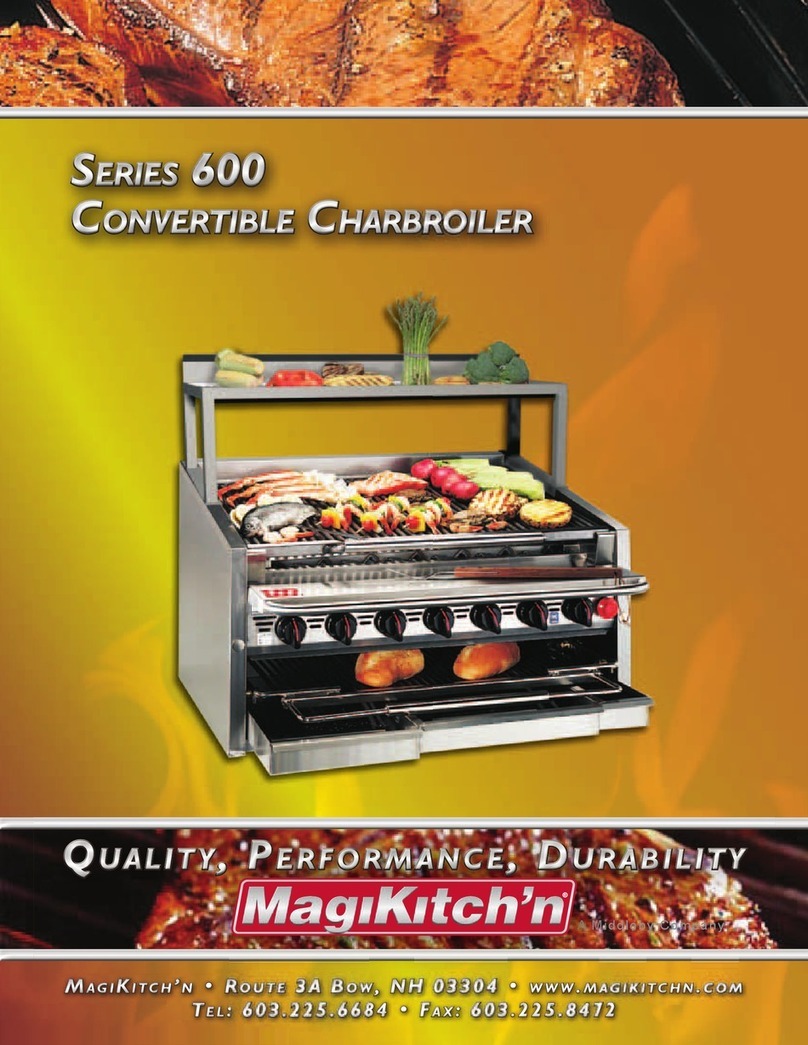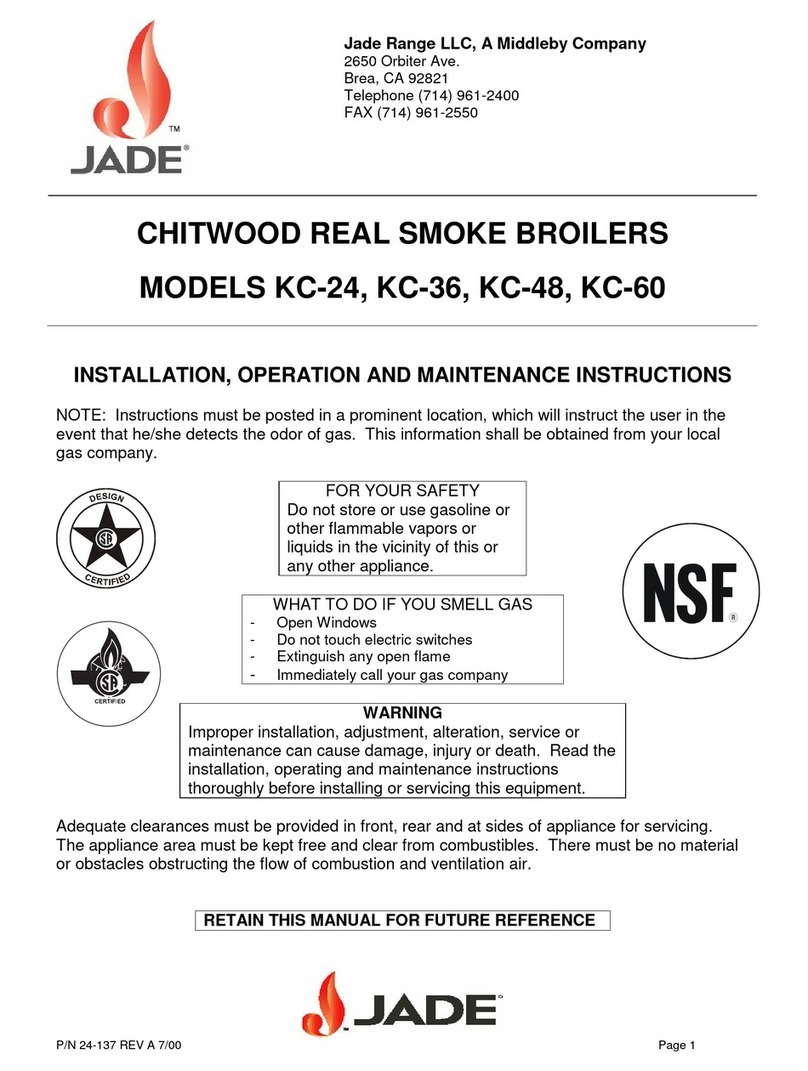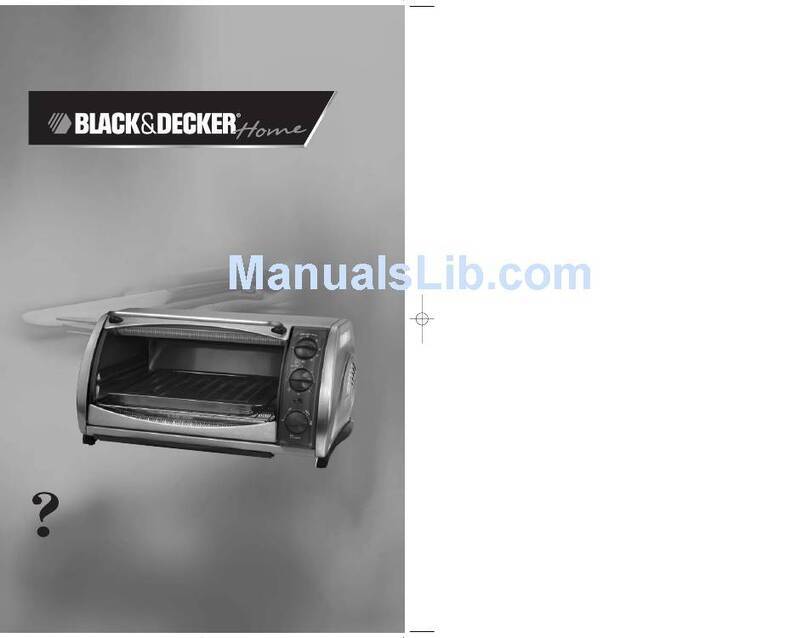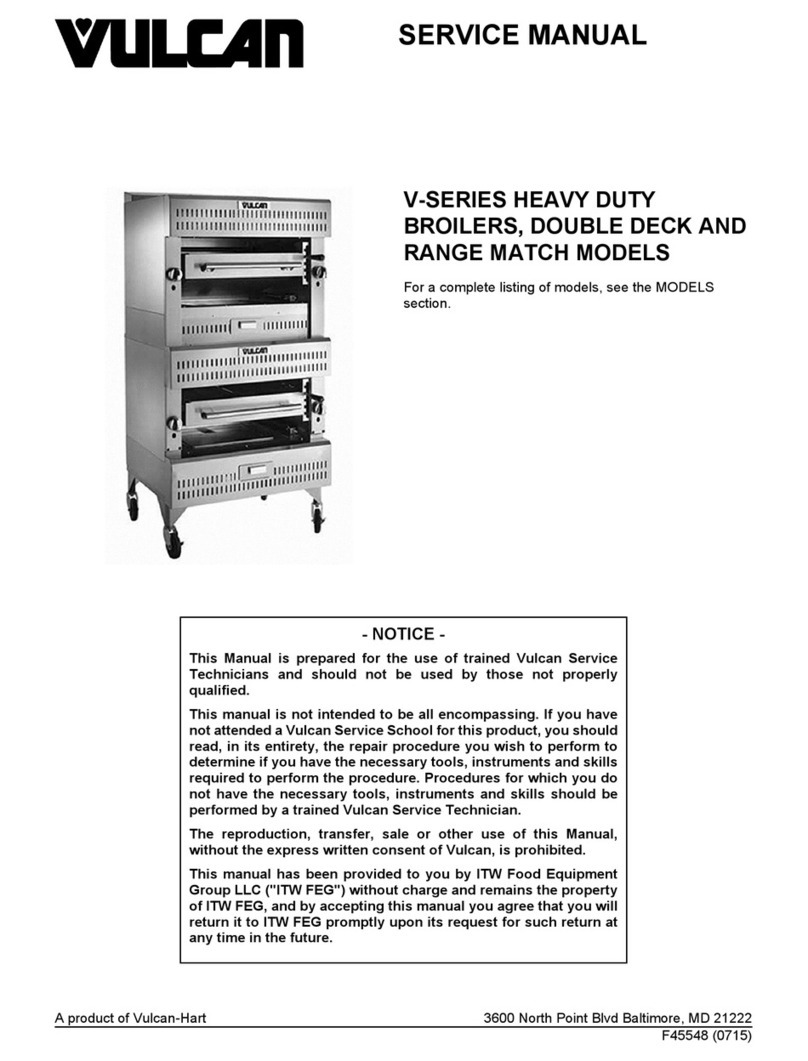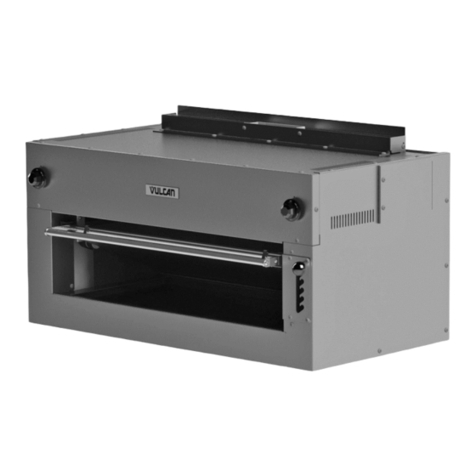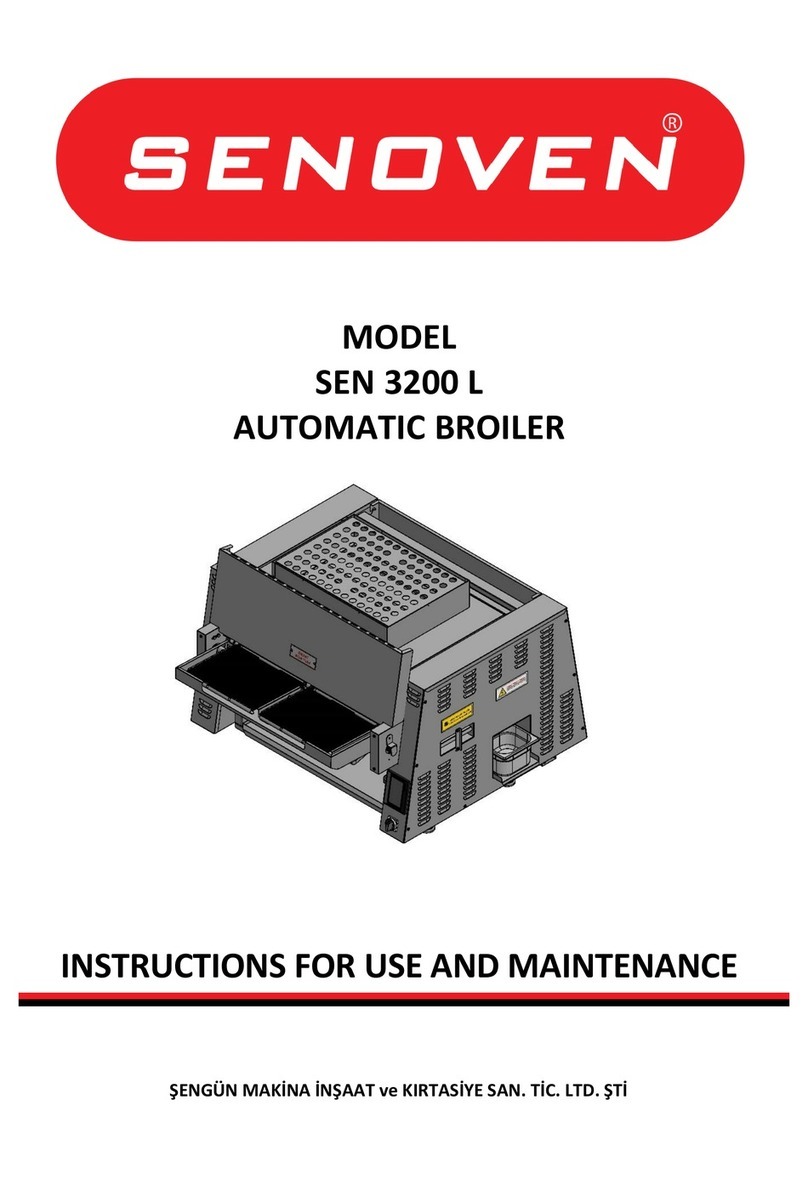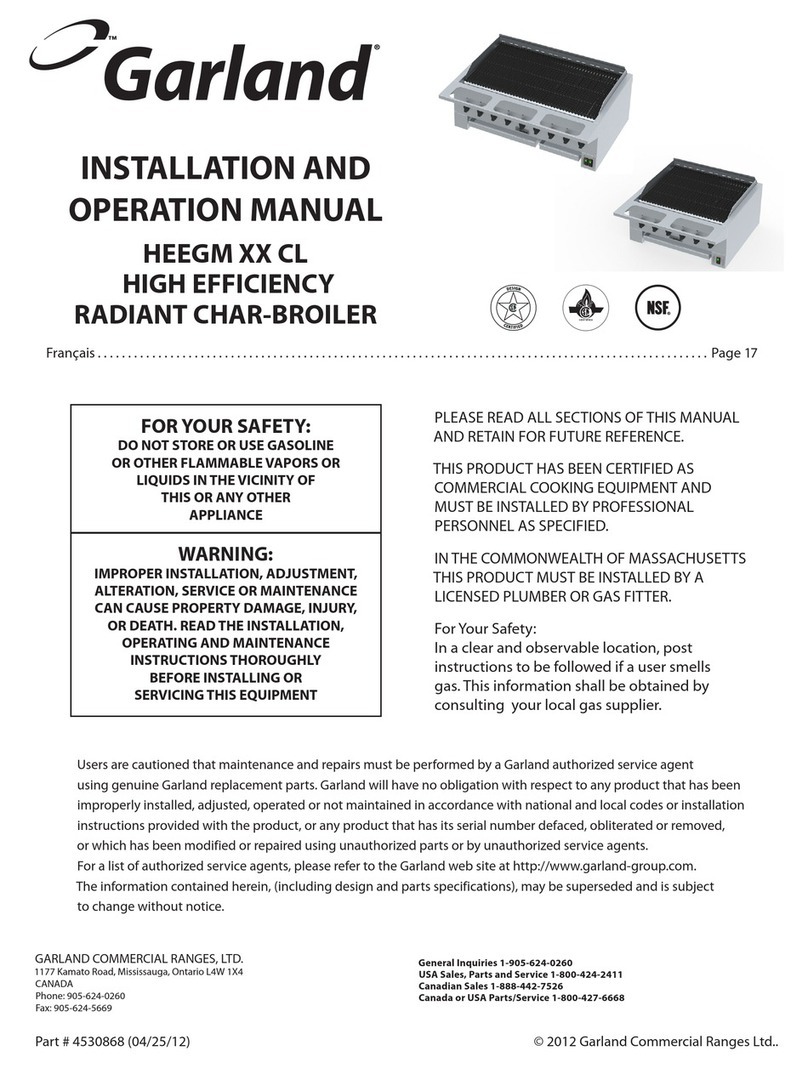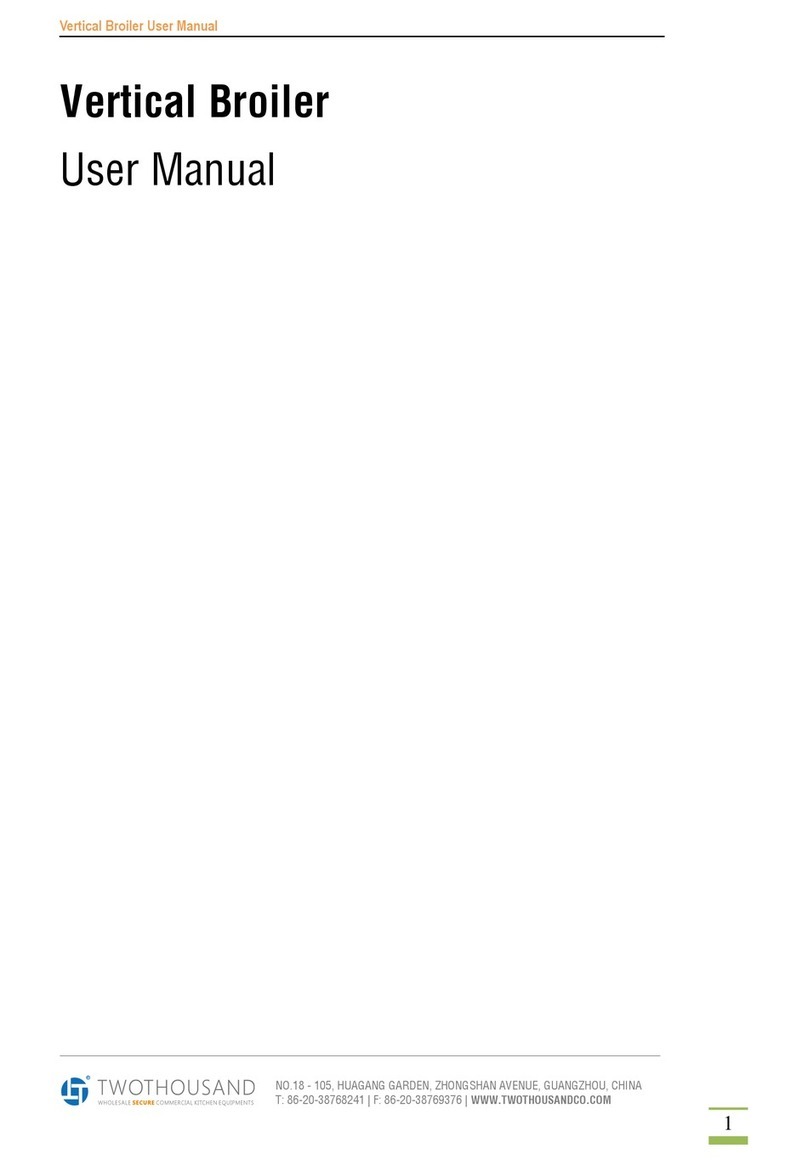GENERAL CLEANING
The complete broiler should be given a
periodic cleaning. Lint and grease suspended
in the air tend to collect in air passages.
Exterior
PAINTED SURFACE
Allow equipment to cool before cleaning
exterior surfaces. Painted surfaces should be
cleaned using a mild soap and warm water
solution on a sponge or soft cloth.
Powder coated, copper, and other such
painted or plated finishes are not covered
under warranty. These finishes are subject to
wear and may begin to discolor and/or chip
within a short period of time. Caution should
be taken when cleaning. Using a mild soap
and water solution will help to maintain the
look and finish.
STAINLESS STEEL SURFACES
Stainless steel is an alloy of iron which
contains chromium. In the process of
manufacturing stainless steel, chromium in the
alloy is used to form the hard oxide coating on
the surface. If this is taken off through
corrosion or wear, it will rust like regular steel.
To remove dirt, grease or product residue
from stainless steel, use water and a mild
detergent if needed, applied with a sponge or
lint-free cloth. Dry thoroughly with a lint-free
cloth.
To remove grease and food splatter, or
condensed vapors that have baked on the
equipment, you can use a (non-abrasive)
commercial cream cleanser or baking soda
and water, applied with a damp lint-free cloth
or sponge. Rub cleanser as gently as possible
(with grain) in the direction of the polished
lines. Do not rub in a circular motion, it will
damage the finish. Rinse surface after
cleaning with a damp lint-free cloth and clean
water. Dry thoroughly with a clean lint-free
cloth. Drying thoroughly will prevent water
spots which are harmful to the finish.
CAUTION
NEVER USE ABRASIVES, POWDERS,
HARSH LIQUIDS, CAUSTICS, OR DYES AS
THEY MAY LEAVE A FILM OR RESIDUE
THAT WILL CLOG THE PORES OF THE
SPECIAL COATING.
Precautions
Strong bleaches tend to corrode many
materials and should not come in contact
with stainless steel sinks or utensils longer
than 30 minutes. When these chemicals
are used, the stainless should be rinsed
thoroughly.
Tincture of iodine or iron should not remain
in contact with stainless surfaces. These
solutions which cause stainless to discolor,
should be rinsed off immediately after
contact.
Some foods, such as mustard, mayonnaise,
lemon juice, vinegar, salt or dressings
containing these, will attack and corrode
stainless. You should never store them in
stainless containers.
Ordinary steel wool pads should be not
used to clean stainless; particles may
lodge in the surface and rust. Allowing the
steel wool pad to rest on a stainless
surface may cause a rusty appearance.
For difficult cleaning jobs such as removing
burned-on foods, nylon “sponges” or pads
are recommended. When cleaning a highly
polished, mirror finish, a nylon pad should
be used to avoid scratching the finish.
Gritty, hard abrasives will mar a stainless
finish and are not recommended.
MAINTENANCE
7



